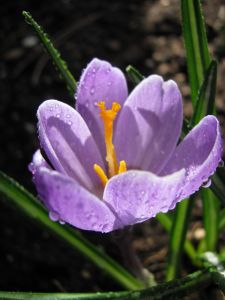Landscaping In Rain Gardens
Rain Gardens are more often referred to as sunken gardens. They are planted lower than the surrounding ground level to better catch the rain water. It’s not hard to know what landscaping in rain gardens you should have.
Rain gardens capture storm run-off from non-porous surfaces like roofs and driveways, directing it to a garden where it will nourish plants rather than ending up in the local sewer or drainage system. Pollutants from streets and rooftops can get into the waterways, creating a pollution problem that rain gardens can, in a small way, help solve.
Have you been wanting to start one, but are unsure of where to begin? Here are some simple, basic steps to help you get started on creating a rain garden.
Choose a Location
Location is everything when it comes to rain gardens. There are some basic do’s and don’ts to consider first.
* Don’t place your rain garden right next to a building. The extra moisture is not good for the foundation. Sources suggest placing it at least ten feet away.
* Level ground is considered better than sloped; level areas hold the water better.
* If you have a septic system, do not put a rain garden over it.
* Sunken gardens near trees can damage the tree’s roots with excess water. So go for an open area away from trees.
* Determine how large it should be in relation to the impermeable areas that will be draining into it. A good rule of thumb is, bigger is better. It’s hard to go wrong with a rain garden that’s very large, but you can go wrong with one that’s too small to accommodate the run-off. You can increase the size by going deeper, too, to make up for a lack of yard space.
* Make sure you have adequate drainage. In areas with heavy clay soils, this is especially important. You may think that choosing a spot that has a natural pond or pool after a rainfall is a good choice, but it’s important to find out why that ponding happens. Observe the area after a rain and see how long it takes the water to drain away. If it takes more than twelve hours, it may not be a good place. If it’s drained within twelve hours, you may have a great spot for your rain garden.
If the spot isn’t just right drainage-wise, there are some things you can do to prepare the soil.
Prepare the Location
Dig out the area to the desired depth. This is hard work, so be forewarned that it may take a while and you may want some friends to help. Save the soil if your rain garden is on a slope; you’ll want the extra dirt to build an earthen dam or wall along the lower edge of the garden.
Once it’s dug, be careful that you don’t walk in the bottom of it too much and compact the soil. Make it roughly level by removing and adding soil where necessary. Work in compost if you need to improve drainage.
Add Plants
Nearly all sources agree that native plants work best. They usually need the least coddling and will put down strong roots, and they support the native eco-systems. Diversity is healthy, so plant an assortment. Finally, the plants should, of course, be water lovers that thrive in a wet environment. Remember, water-loving shrubs and small trees are fine additions that tend to soak up lots of water.
There you have some simple ways to add landscaping in your rain garden. Happy Gardening!



